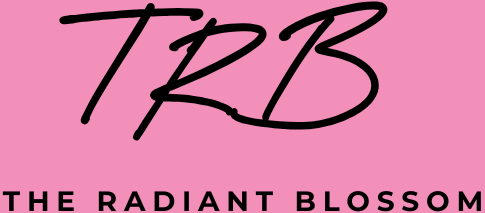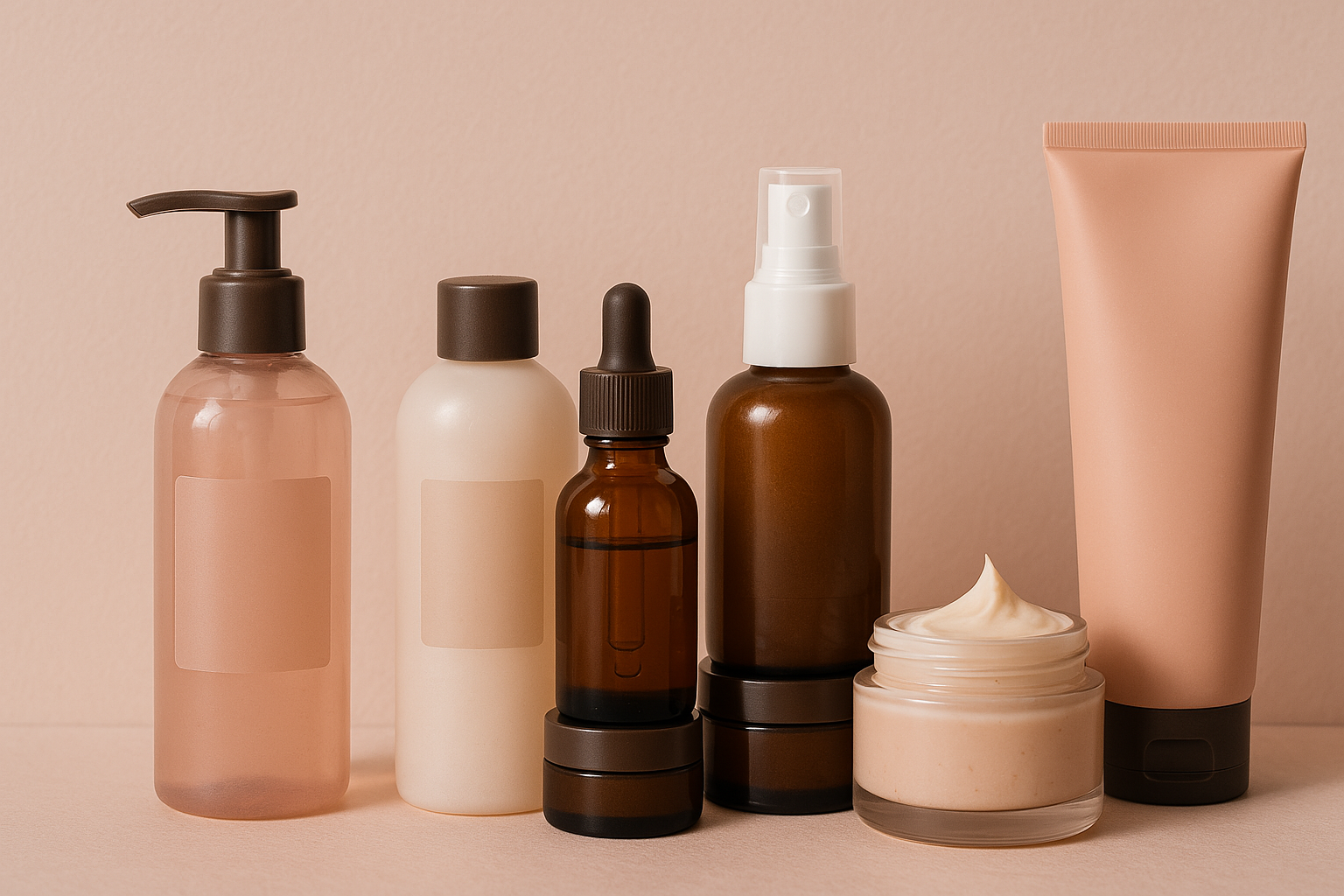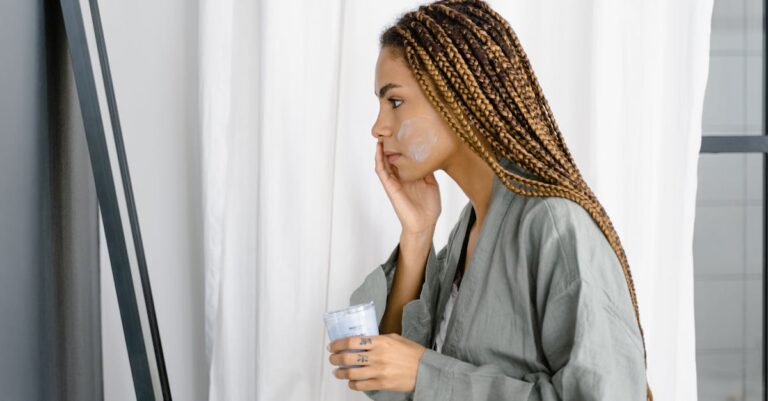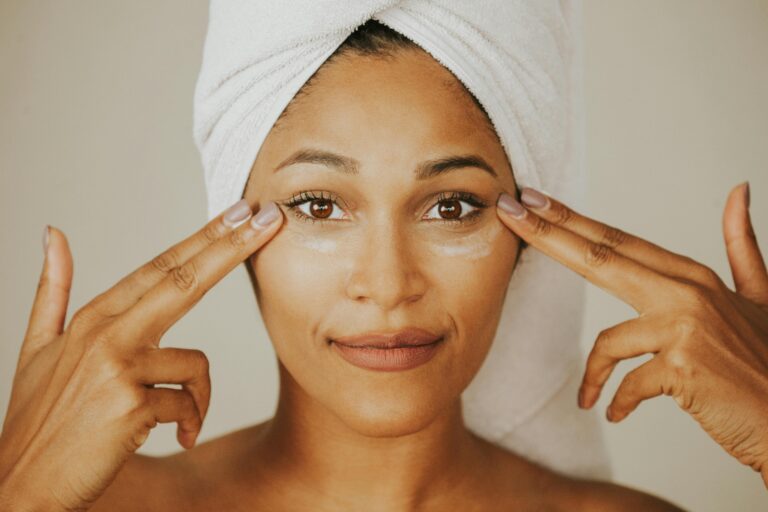Skincare is not just about using the right products—it’s also about using them in the right order. You could have all the right products, but if they’re applied in the wrong order, you might not get the results you’re looking for. Worse, improper skincare layering can cause irritation or cancel out the benefits of your expensive serums and creams.
Layering your skincare products the right way helps ensure each one is fully absorbed and able to do its job—whether that’s hydrating, protecting, exfoliating, or healing. Think of it like building a house: you need a solid foundation before you can add the walls, windows, and roof. The same principle applies to skincare: proper layering allows every step to support the next, working together to improve your skin over time.
In this guide, we’ll walk you through the correct order to apply your skincare products, explain why it matters, and show you how to customize your routine for your skin’s unique needs. Whether you’re a skincare newbie or a seasoned enthusiast, mastering the art of layering will help you get the most out of your routine.
The Golden Rule: Thinnest to Thickest
When in doubt about the order of your skincare routine, remember this golden rule: apply your products from thinnest to thickest consistency.
Why? Lighter, water-based products absorb faster and deliver active ingredients deeper into the skin. Thicker, oil-based products sit closer to the surface, forming a protective barrier which helps seal everything in. If you reverse the order—say, putting a lightweight serum on top of a heavy cream—heavier products will block lighter ones from working properly, and you end up wasting your product.
Here’s a simple analogy: imagine trying to pour water onto a waxed surface—it beads up and slides off. But if you lay water down first and then apply wax, it stays put. Your skin works similarly.
So, start with the most fluid, fast-absorbing formulas (like toners and serums), and end with heavier ones (like oils and creams). Sunscreen, however, is an exception and should always go last in your morning routine, regardless of its texture.
Quick Order Snapshot:
- Cleanser
- Toner / Essence
- Serums
- Eye Cream
- Moisturizer
- Face Oil (optional)
- Sunscreen (AM only — always last!)
Stick to this rule, and your products will absorb better, work more effectively, and play nicer together.
Morning vs. Night Skincare Layering Routine
Your skin’s needs shift depending on the time of day—so should your skincare. Understanding the difference between a morning and night routine helps you choose the right products and get the most out of your regimen.
Morning Routine: Protect and Prep
During the day, your skin is exposed to environmental stressors like UV rays, pollution, and free radicals. The goal of your morning routine is to protect, hydrate, and prep your skin for the day ahead.
Typical AM Routine:
- Cleanser – Refresh and remove oil/sweat from overnight
- Toner / Essence (Optional) – Balances pH and preps skin for other products.
- Serum – Apply water-based serums first (e.g., vitamin C) before thicker ones (e.g., hyaluronic acid).
- Eye Cream (Optional) – Hydrates the delicate eye area and reduces puffiness and dark circles.
- Moisturizer – Locks in hydration and creates a smooth base for sunscreen.
- Sunscreen (SPF 30+) – The most important step to protect against UV damage.
Night Routine: Repair and Replenish
While you sleep, your skin enters repair mode—cells regenerate, collagen production increases, and damage is repaired. This is the ideal time to use active ingredients that might make your skin sensitive to sunlight during the day.
Typical PM Routine:
- Double Cleanse (if wearing makeup/SPF) – Use an oil-based cleanser first, then a water-based cleanser.
- Toner / Essence – Helps with hydration and exfoliation.
- Serums – Apply active ingredients like retinol, AHAs, BHAs, or niacinamide.
- Eye Cream (Optional) – Nourishing or anti-aging formulas
- Moisturizer – Rehydrate and support barrier repair
- Face Oil / Occlusive Layer (optional) – Provides extra nourishment and seals everything in for overnight absorption
Optional treatments like masks, spot treatments, or chemical exfoliants should be used on non-retinol nights.
Key Takeaway:
- AM = protect & prep
- PM = treat & repair
Using the right products at the right time allows your skin to function at its best around the clock.
Why Does Skincare Layering Matter?
Applying products in the correct order helps with better absorption and maximum effectiveness. Some products are designed to penetrate deeply, while others form a protective barrier. If applied incorrectly, heavier products can block lighter ones from working properly.
Special Add-ons and How to Layer Them
Not every product fits into a daily routine, but special treatments—like exfoliants, masks, and spot treatments—can seriously level up your skincare when used correctly. The key? Knowing when to use them and how to slot them into your existing routine.
Exfoliants (1–3x/week)
What it is: Products that remove dead skin cells—either chemically (AHAs, BHAs, PHAs) or physically (scrubs).
Why it’s important: Promotes cell turnover, unclogs pores, brightens skin tone.
How to layer:
- Use after cleansing and before serums.
- Follow with hydrating serums and moisturizer.
Tips: - Avoid layering exfoliants with retinol or strong actives to prevent irritation.
- Don’t overdo it—start once a week and increase gradually.
Face Masks (1–3x/week)
What it is: Concentrated treatments for hydration, detox, soothing, or clarifying.
Why it’s important: Boosts your regular routine with targeted care.
How to layer:
- Apply after cleansing and before toning (unless it’s a sheet mask—those go after toner).
- Rinse-off masks: cleanse → mask → continue with routine
- Sheet masks: cleanse → toner → mask → serum/moisturizer
Tips: - Clay masks are best for oily or acne-prone skin.
- Hydrating masks are great for dry or stressed skin.
Spot Treatments (as needed)
What it is: Targeted formulas (like salicylic acid, benzoyl peroxide, or sulfur) to treat breakouts or blemishes.
Why it’s important: Delivers potent ingredients directly to the problem area.
How to layer:
- Apply after serums but before moisturizer so they can penetrate effectively.
Tips: - Use a clean cotton swab or fingertip.
- Don’t layer actives on top of spot treatments unless the formula says it’s okay.
Face Mists & Hydration Boosters
What it is: Light, water-based mists or ampoules meant to add extra hydration.
Why it’s important: Helps keep skin plump and receptive to other products.
How to layer:
- Use after toner or throughout the day as a refresh.
Tips: - Use between layers to enhance absorption (a K-beauty trick!).
- Look for soothing ingredients like aloe, rose water, or panthenol.
Bonus Tip: Always give your skin a moment to absorb each product (30 seconds to 1 minute) before moving on to the next—especially with actives.
Ingredient Layering Tips
Layering skincare products correctly isn’t just about order—it’s also about ingredient compatibility. Some ingredients work beautifully together (hello, power couples), while others can clash and cause irritation, dryness, or make each other less effective.
Good Combos (Power Pairs)
These ingredient duos are known to enhance each other’s benefits:
- Vitamin C + Vitamin E + Ferulic Acid
→ Boosts antioxidant power and stability of Vitamin C - Niacinamide + Hyaluronic Acid
→ Calms and hydrates while supporting barrier repair - Retinol + Peptides
→ Reduces irritation and supports skin regeneration - Salicylic Acid (BHA) + Niacinamide
→ Treats acne while soothing inflammation - Ceramides + Any Active
→ Helps strengthen the skin barrier post-treatment
Caution Combos (Use with Care or Alternate Days)
These can be effective if your skin is used to them, but may cause irritation if overused or layered improperly:
- Vitamin C + Retinol
→ Can be too harsh together so better use them at different times of day (Vitamin C in the morning and retinol at night) - Retinol + AHA/BHA
→ Both increase cell turnover; layering can lead to redness and flaking. Alternate nights instead. - Benzoyl Peroxide + Retinol
→ Benzoyl Peroxide can deactivate retinol. Use one in the morning and the other at night if needed. - Vitamin C + Niacinamide (debated)
→ Previously thought to be incompatible, but newer research shows they can coexist in modern formulations. Still, sensitive skin types might want to patch test or use them at different times.
Avoid Mixing
Some combos are best kept completely separate to avoid irritation or reduced effectiveness:
- Multiple strong acids (AHA + BHA + PHA)
→ Can over-exfoliate and damage the barrier - Too many actives at once
→ More isn’t always better. Overloading with retinol, acids, Vitamin C, etc., can cause irritation and inflammation
Pro Tips:
- Patch test when introducing new products or combos.
- Introduce actives slowly – Start with 2-3 times a week to avoid irritation.
- Trust how your skin feels. If it’s burning, flaking, or turning red—scale back.
- If using two strong actives, try “skin cycling”: alternate actives on different nights (e.g., exfoliate one night, use retinol the next, then rest or hydrate).
- Let products absorb – Wait 30-60 seconds between layers for better absorption.
- Use SPF daily – Essential when using actives like retinol, AHAs, or vitamin C.
By layering your skincare correctly, you’ll maximize results and keep your skin healthy and glowing!
Tailoring to Skin Types
Not all skin is created equal, so your skincare layering routine should reflect your skin’s unique needs. Here’s how to adjust each step depending on your skin type.
Dry or Dehydrated Skin
Your goals: Hydration, nourishment, and barrier repair.
Layering Tips:
- Use creamy or oil-based cleansers to avoid stripping the skin.
- Choose hydrating toners/essences with hyaluronic acid, glycerin, or aloe.
- Layer multiple hydrating serums (yes, you can stack them!)—start with humectants, then a barrier-repair serum.
- Use a thicker moisturizer with ceramides or shea butter.
- Add a face oil or occlusive like squalane or petrolatum to seal in moisture.
- Avoid overusing acids or strong actives unless buffered with hydration.
Hydration sandwich trick: Mist → serum → mist → cream.
Oily or Acne-Prone Skin
Your goals: Balance oil, prevent breakouts, unclog pores.
Layering Tips:
- Use a gentle foaming cleanser with salicylic acid or tea tree.
- Toners with BHA or witch hazel can help control oil.
- Look for lightweight, water-based serums (niacinamide, zinc, green tea).
- Moisturize—don’t skip this step! Use oil-free gels or lotions.
- Spot-treat pimples after serums, before moisturizer.
- Avoid heavy oils or comedogenic ingredients (e.g., coconut oil, lanolin).
- Clay masks 1–2x/week can detox and reduce shine.
Non-comedogenic and fragrance-free products are your best friends.
Combination Skin
Your goals: Balance dry and oily areas.
Layering Tips:
- Use a gentle, pH-balanced cleanser that doesn’t dry out the skin.
- Target oily areas with pore-minimizing toner or BHA.
- Use multiple serums if needed (e.g., hydrating on cheeks, clarifying on T-zone).
- Go for lightweight moisturizer or use two types for different areas.
- Use masks multi-zoning style: clay on the T-zone, hydrating on cheeks.
Customize by zone—your skin doesn’t need the same thing everywhere.
Sensitive Skin
Your goals: Calm, strengthen, and protect.
Layering Tips:
- Stick to minimal, fragrance-free products.
- Use a gentle cream cleanser and skip exfoliants unless very mild (e.g., PHAs).
- Go for soothing ingredients like centella asiatica, oat, ceramides, panthenol.
- Apply barrier-repairing serums and skip harsh actives unless recommended by a derm.
- Moisturize with rich but non-irritating formulas.
- Patch test everything new before full application.
Less is more—consistency and calmness go a long way here.
Mature or Aging Skin
Your goals: Hydration, firming, and cell renewal.
Layering Tips:
- Use a gentle cleanser that doesn’t strip natural oils.
- Incorporate antioxidant serums (Vitamin C, resveratrol) in the AM.
- Use peptides, retinoids, and ceramides in the PM.
- Double up on hydration with essences, serums, and creams.
- Finish with an occlusive or facial oil to reduce transepidermal water loss.
Hydration + collagen support = a youthful glow.
Common Mistakes to Avoid
Even with the best products, a few wrong moves can sabotage your skincare goals. Here are some common skincare layering pitfalls and how to avoid them:
1. Skipping Sunscreen
Why it’s a mistake: No matter how great your routine is, unprotected sun exposure will undo your efforts—causing premature aging, pigmentation, and even damage from actives like retinol or acids.
Fix it: Apply a broad-spectrum SPF 30 or higher every morning, even on cloudy days or indoors.
2. Using Too Many Actives at Once
Why it’s a mistake: Overloading your routine with Vitamin C, AHAs, retinol, and niacinamide can lead to irritation, dryness, or breakouts.
Fix it: Introduce one active at a time and alternate nights or mornings. Simplicity = effectiveness.
3. Not Waiting Between Layers
Why it’s a mistake: Layering too fast can cause pilling (when products ball up) or reduce absorption.
Fix it: Wait about 30–60 seconds between steps, or until each product feels mostly absorbed.
4. Applying Products in the Wrong Order
Why it’s a mistake: Applying thick creams before light serums can block absorption and reduce effectiveness.
Fix it: Always go thinnest to thickest, and end with SPF (in the AM).
5. Over-Exfoliating
Why it’s a mistake: More exfoliation does not equal better skin—too much can destroy your barrier and cause redness or flaking.
Fix it: Stick to 1–3 times a week max, and never exfoliate on the same day you use strong actives like retinol.
6. Ignoring the Neck and Chest
Why it’s a mistake: These areas show signs of aging too—but are often neglected.
Fix it: Extend your routine down to your neck and décolletage. They deserve love, too.
7. Using Expired Products
Why it’s a mistake: Expired skincare can be ineffective—or even harmful.
Fix it: Check expiration dates and shelf life after opening (look for the little jar icon on packaging, e.g., “12M” = good for 12 months after opening).
8. Changing Your Routine Too Often
Why it’s a mistake: Skin needs time to adjust. Constantly switching products can cause breakouts or confusion about what’s working.
Fix it: Give new products 4–6 weeks (unless there’s irritation) and introduce them one at a time.
Sample Skincare Layering Routines for Different Goals
Not sure how to pull it all together? These sample AM + PM routines are tailored to common skincare goals. Plug in your favorite products and adjust as needed!
Goal: Glowy, Even-Toned Skin
AM Routine:
- Gentle Cleanser
- Hydrating Toner or Essence
- Vitamin C Serum
- Lightweight Moisturizer
- Sunscreen (SPF 30+)
PM Routine:
- Double Cleanse (if wearing SPF/makeup)
- Toner or Essence
- Niacinamide Serum
- Peptide Cream or Barrier Moisturizer
- Optional Face Oil
Tip: Use a gentle AHA 1–2x/week at night to boost radiance.
Goal: Deep Hydration & Barrier Repair
AM Routine:
- Cream or Milky Cleanser
- Hydrating Essence or Mist
- Hyaluronic Acid Serum
- Ceramide Moisturizer
- Sunscreen
PM Routine:
- Cream Cleanser
- Hydrating Toner
- Panthenol or Centella Serum
- Thick Cream or Sleeping Mask
- Optional Occlusive (like Vaseline on dry areas)
Tip: Try “moisture sandwiching” (mist → serum → mist → cream).
Goal: Acne Control & Oil Balance
AM Routine:
- Salicylic Acid Cleanser
- Pore-Refining Toner
- Niacinamide Serum
- Oil-Free Gel Moisturizer
- Matte SPF
PM Routine:
- Gel Cleanser or Double Cleanse
- Toner (optional BHA)
- Spot Treatment
- Lightweight Moisturizer
- Optional Retinol (2–3x/week)
Tip: Avoid layering too many drying products—keep it balanced with hydration.
Goal: Anti-Aging & Firmness
AM Routine:
- Gentle Cleanser
- Antioxidant Toner or Essence
- Vitamin C Serum
- Peptide Moisturizer
- Broad-Spectrum Sunscreen
PM Routine:
- Oil Cleanser + Gentle Cleanser
- Hydrating Toner
- Retinol or Retinoid
- Peptide Cream or Moisturizer
- Optional Facial Oil
Tip: Use retinol only 2–3x/week to start, and buffer with moisturizer.
Goal: Sensitive or Reactive Skin
AM Routine:
- Cream Cleanser
- Soothing Toner (no alcohol/fragrance)
- Niacinamide or Centella Serum
- Ceramide Moisturizer
- Mineral Sunscreen
PM Routine:
- Cream Cleanser
- Panthenol or Oat-Based Serum
- Barrier Moisturizer
- Optional Occlusive Layer
Tip: Avoid fragrance, essential oils, strong acids, and too many step
Conclusion
Mastering the art of layering your skincare isn’t about having the most products—it’s about understanding what your skin needs, and when. By applying your products in the right order and with thoughtful attention to ingredients and skin type, you can transform your daily routine from a guessing game into a targeted, effective ritual.
Whether your goal is hydration, glow, acne control, or anti-aging, layering properly maximizes every product’s potential and supports long-term skin health. And remember: consistency, patience, and simplicity are often the secret ingredients to lasting results.
Your skincare journey is personal, and there’s no one-size-fits-all routine. Start with the basics, listen to your skin, and let your routine evolve with you.
Glow at your own pace—and enjoy every layer of the process.




